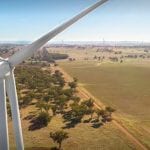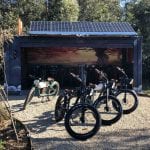Around The Web
Whatever the Weather: mood
Whatever the Weather: mood
Bodangora wind farm connects to the grid in NSW
 Bodangora wind farm in NSW switches on its first turbines.
Bodangora wind farm in NSW switches on its first turbines. EnergyLab and Southern Cross to drive clean energy innovation in Northern Rivers.
 Australia’s leading clean-tech business accelerator EnergyLab has partnered with Southern Cross University’s Enterprise Lab to launch an Acceleration Program for innovators in the renewable and advanced energy sectors.
Australia’s leading clean-tech business accelerator EnergyLab has partnered with Southern Cross University’s Enterprise Lab to launch an Acceleration Program for innovators in the renewable and advanced energy sectors. Killer whale mother finally lets dead newborn calf go, after 17 days
Hippo bite kills Chinese tourist in Kenya
Michael Gove accused of letting wealthy grouse moor owners off the hook
Papers show UK environment secretary suggested owners voluntarily end controversial practice of burning heather to head off threat of compulsory ban
Michael Gove, the environment secretary, has been accused of letting the owners of large grouse moors who are alleged to be damaging the environment off the hook.
The accusation from campaigners concerns the owners’ practice of repeatedly burning heather on their moorland estates to help boost the numbers of grouse for shooting.
Continue reading...Parker Solar Probe: Nasa launches mission to 'touch the Sun'
Nasa's Parker Solar Probe spacecraft launches successfully
A garden alive with art: all-natural insect sculptures – in pictures
Inspired by the art of ikebana – a traditional style of Japanese flower arranging – Montreal-based artist Raku Inoue hand-crafts bugs using materials from his garden. He transforms his garden waste, including sticks, seeds and petals, to create his Natura Insects series. “I think about the main shape of the insect,” he says, “and try to find something to satisfy that. It’s very much like a puzzle.” As the year progresses, his creative options change. “I choose the materials according to what nature offers during that time. All four seasons offer many different materials to play with.” The series started as a morning routine over coffee to sharpen his thoughts for the day. “It was never meant to be a complex process, but rather an easygoing, morning mind-stretching exercise.”
Continue reading...Weedkiller glyphosate 'doesn't cause cancer' - Bayer
The spawning of reef conservation
Monsanto ordered to pay $289m damages in Roundup cancer trial
CP Daily: Friday August 10, 2018
EPA staff opposed agency’s new rules on asbestos use, emails reveal
Emails obtained by New York Times show workers worried that companies could get away with using asbestos in ways the EPA did not list
The Environmental Protection Agency’s own staffers objected to a controversial new US rule governing the use of cancer-causing asbestos, according to internal emails.
Related: EPA ordered to ban pesticide linked to learning disabilities
Continue reading...A Big Country 11 August 2018
A California town ravaged by wildfire – in pictures
The Carr fire, one of 13 large fires burning in California, was ignited in late July when a trailer tire blew out and created sparks as it ground on the asphalt. It killed seven people and destroyed 1,077 homes in the small city of Redding, in the far north of the state. New photos released by the city show the extent of the damage
Continue reading...


